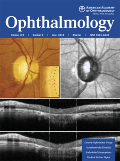
OPHTHALMOLOGY
Scope & Guideline
Leading the way in ophthalmic research and clinical excellence.
Introduction
Aims and Scopes
- Neuro-Ophthalmology:
A significant focus on neuro-ophthalmological conditions, including optic neuropathies, visual disturbances secondary to neurological disorders, and the intersection of neurological and ophthalmological care. - Genetic and Rare Disorders:
Research on inherited optic neuropathies, genetic mutations associated with ocular conditions, and case studies highlighting rare disorders, reflecting an ongoing interest in the genetic basis of eye diseases. - Clinical Trials and Treatment Efficacy:
Studies evaluating the efficacy and safety of various treatment modalities, including pharmacological interventions and surgical procedures, particularly in the context of optic neuropathies and other complex ocular conditions. - Innovative Imaging Techniques:
Utilization of advanced imaging technologies, such as Optical Coherence Tomography (OCT) and Angiography, to enhance diagnostic precision and monitor disease progression in various ocular conditions. - Public Health and Epidemiology:
Exploration of population-based studies and public health issues related to ocular diseases, including the impact of systemic conditions on eye health and the epidemiology of ocular manifestations in infectious diseases. - Education and Awareness:
Efforts to improve patient education and awareness regarding ocular diseases, treatment options, and the importance of early detection and intervention.
Trending and Emerging
- Neuro-Ophthalmology and Visual Pathway Disorders:
An increase in research exploring the connections between neurological disorders and visual impairment, including the impact of conditions like multiple sclerosis and idiopathic intracranial hypertension on ocular health. - Impact of COVID-19 on Eye Health:
Rising interest in the ocular manifestations of COVID-19 and its long-term effects on eye health, including studies on post-viral optic neuropathy and other related conditions. - Novel Therapeutic Approaches:
Emerging themes around innovative treatments, including gene therapy and new pharmacological agents, particularly in the context of inherited optic neuropathies and degenerative diseases. - Artificial Intelligence and Digital Health:
Growing publications on the application of AI and machine learning in ocular diagnostics, imaging analysis, and patient management, reflecting a trend towards integrating technology in ophthalmology. - Patient-Centered Care and Quality of Life Assessments:
Increased focus on the quality of life impacts of ocular conditions, emphasizing the patient experience and outcomes, as well as the importance of holistic approaches to treatment.
Declining or Waning
- Traditional Surgical Techniques:
Decrease in publications related to conventional surgical approaches in favor of minimally invasive techniques and innovative procedures, indicating a shift towards more modern treatment modalities. - General Ophthalmology:
A reduction in studies focused on general ophthalmic conditions not related to neuro-ophthalmology. The journal appears to be concentrating more on specialized areas, particularly those intersecting with neurological conditions. - Systemic Disease Correlations:
Less emphasis on the broader systemic implications of ocular diseases, as the focus narrows to specific conditions and their direct ocular manifestations, particularly in the context of neuro-ophthalmology.
Similar Journals

INTERNATIONAL OPHTHALMOLOGY
Elevating Ophthalmic Knowledge Worldwide.International Ophthalmology is a prestigious journal published by Springer, dedicated to advancing the field of ophthalmology through the dissemination of high-quality research and clinical studies. With an ISSN of 0165-5701 and an E-ISSN of 1573-2630, this journal has been a vital resource since its inception in 1978, serving the global community of ophthalmologists, researchers, and healthcare professionals. The journal holds a significant Q2 ranking in the category of ophthalmology and has achieved a commendable position as #56 in Scopus's rankings, placing it within the top tier of its field. Although it does not offer open-access options, articles published in International Ophthalmology are widely cited and respected, playing a crucial role in the ongoing dialogue regarding contemporary ophthalmic practices and innovations. With a broad scope covering all aspects of eye care, this journal is essential for those aiming to keep abreast of the latest developments and research findings that shape the future of vision science and clinical practice.
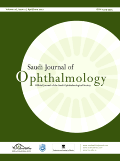
Saudi Journal of Ophthalmology
Pioneering Research: Illuminating the Path to Better Eye HealthSaudi Journal of Ophthalmology, published by Wolters Kluwer Medknow Publications, stands as a crucial platform for the dissemination of innovative research and clinical practices in the field of ophthalmology. Since its inception in 2009, this journal has effectively contributed to the growing body of knowledge with a focus on addressing the diverse visual health challenges faced globally. With an ISSN of 1319-4534 and a E-ISSN of 2542-6680, the journal is indexed in Scopus, where it ranks in the Q3 category of ophthalmology, reflecting its commitment to quality research despite the competitive landscape. Situated in India, it provides a unique regional perspective while facilitating global discourse among researchers, practitioners, and students in ophthalmological sciences. Although it currently does not operate as an open-access journal, the Saudi Journal of Ophthalmology is essential for those aiming to expand their understanding of advancements in eye care, making it a valuable resource for professionals dedicated to enhancing patient outcomes through informed research and clinical practice.

Journal of Ophthalmic & Vision Research
Transforming Knowledge into Visionary SolutionsThe Journal of Ophthalmic & Vision Research, published by KNOWLEDGE E, stands as a crucial platform for disseminating high-quality research in the field of ophthalmology. With an ISSN of 2008-2010 and an E-ISSN of 2008-322X, this journal fosters open access to valuable insights since 2010, enhancing visibility and reach for researchers globally. Based in Dubai, UAE, it has established a reputation for excellence, reflected in its Q2 ranking in Ophthalmology for 2023 and its position among the top 65th percentile in Scopus. Covering a broad spectrum of topics within ophthalmic science, the journal serves as a vital resource for professionals, researchers, and students by presenting original research, reviews, and case studies that drive innovation and collaboration within the community. As the journal continues to contribute to advancements in eye care and vision sciences, it invites scholars to explore, engage, and publish within its pages, thus enriching the global discourse on ophthalmic health.

Translational Vision Science & Technology
Connecting Science and Technology for Visual HealthTranslational Vision Science & Technology is a premier open access journal dedicated to the advancement of the field of ophthalmology and biomedical engineering. Published by the Association for Research in Vision and Ophthalmology, Inc., this journal has established itself as a leading source of high-quality research since its inception in 2013, achieving a remarkable impact factor reflective of its influential contribution to the field. With an impressive ranking of #21 in Ophthalmology and #120 in Biomedical Engineering within the Scopus database, it sits within the prestigious Q1 quartile for both categories as of 2023, further validating its significance. The journal's scope encompasses a wide variety of topics focused on the intersection of ophthalmological science and technological innovation, welcoming contributions that promote the understanding and treatment of visual disorders. Available as an Open Access publication since 2016, it ensures that cutting-edge research is freely accessible to researchers, practitioners, and students worldwide, facilitating the rapid dissemination of knowledge essential for the advancement of vision science.
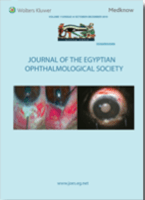
Journal of the Egyptian Ophthalmological Society
Exploring new horizons in eye health and research.Journal of the Egyptian Ophthalmological Society is a premier academic journal dedicated to advancing the field of ophthalmology through high-quality peer-reviewed research. Published by Wolters Kluwer Medknow Publications, this journal plays a critical role in disseminating vital findings and innovations in eye care, fostering knowledge exchange among researchers, practitioners, and educators worldwide. Since its transformation to Open Access in 2014, it has significantly enhanced the accessibility of eye health information, thereby broadening its impact on the global scientific community. With an ISSN of 2090-0686 and an E-ISSN of 2314-6648, the journal aims to tackle contemporary issues in ophthalmology, including clinical practices, public health, and technological advancements in eye care. The journal's commitment to excellence ensures that it remains a vital resource for those looking to contribute meaningfully to this dynamic and crucial field.
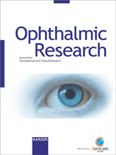
OPHTHALMIC RESEARCH
Transforming Knowledge into Visionary CareOphthalmic Research, with ISSN 0030-3747 and E-ISSN 1423-0259, is a distinguished peer-reviewed journal published by Karger in Switzerland. Established in 1970, this journal serves as a vital resource for exploration and dissemination of knowledge within the fields of Ophthalmology, Cellular and Molecular Neuroscience, and Sensory Systems, maintaining its relevance through its convergence into modern research methodologies leading up to 2024. With impressive rankings in 2023, it holds a Q2 quartile in both Ophthalmology and Medicine (miscellaneous), reflecting its significant contribution to the academic community, alongside Scopus ranks that position it favorably in the competitive landscape of medical and neuroscientific literature. Although not open access, the journal ensures that high-quality research remains accessible to its readership, which includes researchers, professionals, and students eager to stay at the forefront of ophthalmic advancements. By fostering interdisciplinary collaboration and facilitating high-level discourse, Ophthalmic Research is pivotal for those committed to advancing the future of eye care and vision sciences.

Journal of Ophthalmology
Fostering Collaboration for a Brighter VisionThe Journal of Ophthalmology, published by HINDAWI LTD, is an esteemed open-access journal that has been disseminating significant research in the field of ophthalmology since 2009. With an ISSN of 2090-004X and an E-ISSN of 2090-0058, this journal facilitates global access to cutting-edge studies, making it an essential resource for researchers, clinicians, and students alike. Ranked in the Q2 category of ophthalmology for 2023, the journal holds a commendable position with a Scopus rank of #37 out of 137 in its field, placing it in the 73rd percentile. The journal encompasses a variety of topics such as clinical advancements, surgical techniques, and innovative technologies in eye care, aiming to advance scientific knowledge and clinical practice in ophthalmology. By providing a platform for both novel research and comprehensive reviews, the Journal of Ophthalmology is instrumental in fostering collaboration and scholarly communication within the global eye health community, and its commitment to open access ensures that impactful research reaches a wide audience without barriers.
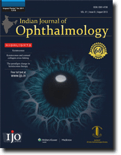
INDIAN JOURNAL OF OPHTHALMOLOGY
Empowering Eye Care: Where Research Meets PracticeThe Indian Journal of Ophthalmology is a prestigious, peer-reviewed publication dedicated to advancing the field of ophthalmology. Published by Wolters Kluwer Medknow Publications, this journal plays a vital role in disseminating high-quality research and clinical insights since its inception in 1946. With an impact factor placing it in the Q2 category in Ophthalmology for 2023, it ranks #42 out of 137 in Scopus, reflecting its influence and reliability in the medical community. As an Open Access journal since 2005, it ensures that impactful research is accessible to a global audience, fostering innovation and knowledge sharing among researchers, healthcare professionals, and students alike. The journal's commitment to publishing cutting-edge studies, comprehensive reviews, and clinical guidelines makes it an essential resource for those navigating the rapidly evolving landscape of eye care and ophthalmology.

OPHTHALMIC AND PHYSIOLOGICAL OPTICS
Exploring the intricate connections of sight and physiology.Ophthalmic and Physiological Optics, published by Wiley, is a premier peer-reviewed journal dedicated to advancing the fields of ophthalmology, optometry, and sensory systems. With an impressive impact factor and categorized in the prestigious Q1 quartile for 2023 across multiple disciplines, the journal provides a vital platform for researchers and practitioners to disseminate innovative findings and explore the complexities of visual science. Founded in 1981, it continues to thrive as a leading resource for reviewing contemporary issues, emerging technologies, and clinical practices. Readers will benefit from its rigorous editorial standards and access to groundbreaking studies pertinent to both academic and clinical environments. Situated at the forefront of the discipline, Ophthalmic and Physiological Optics plays an essential role in bridging the gap between research and practical application, ensuring a comprehensive understanding of vision and its physiological underpinnings.

Eye and Brain
Illuminating the connections between sight and cognition.Eye and Brain is a distinguished open-access journal published by DOVE MEDICAL PRESS LTD, specializing in the interdisciplinary fields of ophthalmology and neuroscience. Since its inception in 2009, the journal has been committed to disseminating high-quality research that enhances understanding of visual perception and neural processes related to vision. With an impressive Scopus ranking in the 92nd percentile for Ophthalmology and the 89th percentile for Neuroscience Sensory Systems, Eye and Brain stands at the forefront of scientific inquiry, providing essential insights into cellular and molecular mechanisms underlying vision and sensory integration. The journal is dedicated to publishing articles that address critical challenges and advancements in these fields, making it a vital resource for researchers, professionals, and students alike. Situated in New Zealand, Eye and Brain not only represents a global collaboration in the eye and brain sciences but also offers a platform for groundbreaking research in the evolving landscape of sensory systems. Submissions are welcomed from across the globe, encouraging a broad spectrum of viewpoints and methodologies.